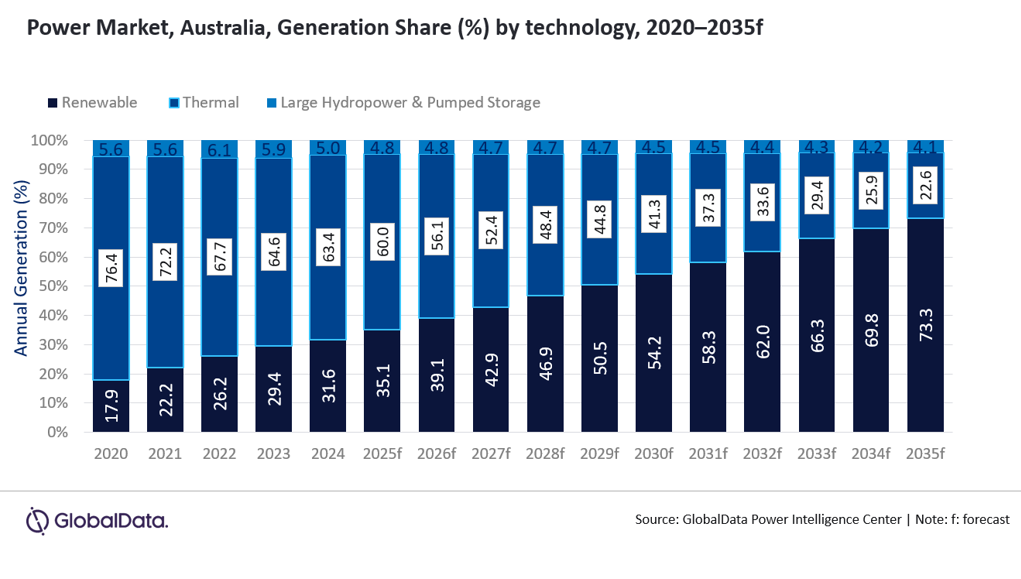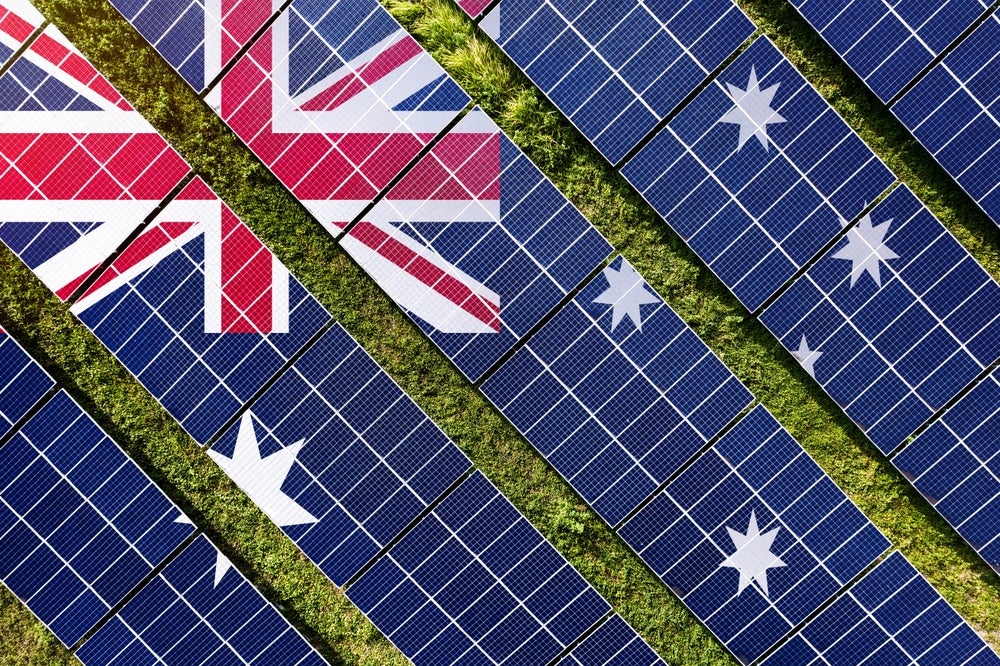GlobalData’s latest report, Australia Power Market Trends and Analysis by Capacity, Generation, Transmission, Distribution, Regulations, Key Players and Forecast to 2035, provides detailed insights into the country’s power sector. The report covers installed capacity (in gigawatts, GW), generation (in terawatt hours, TWh), technology shares and policy developments across the historical period 2020 to 2024 and the forecast period 2025 to 2035. It also evaluates market drivers, challenges, investment opportunities and leading company profiles. The analysis draws on GlobalData’s proprietary databases, primary and secondary research, and in-house expertise.
Australia is undergoing a rapid energy transition, driven by strong government policies, abundant solar and wind resources, and ambitious net-zero goals. Renewables are projected to account for 73.3% of total power generation and 77.8% of installed capacity by 2035, marking a major shift from 2024, when renewables represented 48% of capacity and 31.6% of generation.

The transition is underpinned by key national and state-level measures such as the Renewable Energy Target (RET), the Capacity Investment Scheme (CIS) and the Rewiring the Nation initiative. These policies, along with record rooftop solar uptake and expanding utility-scale projects, are accelerating renewable deployment across the country.
However, Australia is facing mounting challenges in achieving its 82% renewable electricity target by 2030. Delays in grid connections, community opposition to new transmission lines and slow permitting for large-scale projects are hindering progress. Inadequate storage and firming capacity have led to congestion and curtailments, while transmission bottlenecks and uncertainty around coal plant closures continue to constrain momentum toward the 2030 target.
Australia’s long-term decarbonisation is reinforced by initiatives such as the Solar Sunshot Program, Hydrogen Headstart and the Critical Minerals Production Tax Credit, which are driving investment in solar, hydrogen and energy storage. The Rewiring the Nation and Capacity Investment Scheme remain key enablers to ensure renewable integration and system reliability.
Solar photovoltaic (PV) will remain the leading renewable technology, supported by one of the highest rooftop penetration rates globally, with more than 4.16 million PV systems installed across all segments by mid-2025 and annual additions of nearly 0.3 million new rooftop systems. Wind power, both onshore and offshore, is also expected to expand rapidly, driven by the establishment of Renewable Energy Zones that encourage regional investment and grid diversification. Australia’s power sector is undergoing a major transformation, balancing coal retirements with accelerated renewable build-out and grid upgrades. While the 2030 target remains highly ambitious, continued policy alignment, infrastructure delivery,and increased investment in transmission and firming capacity will be vital to sustaining clean energy progress through to 2035 and beyond.

US Tariffs are shifting - will you react or anticipate?
Don’t let policy changes catch you off guard. Stay proactive with real-time data and expert analysis.
By GlobalData





